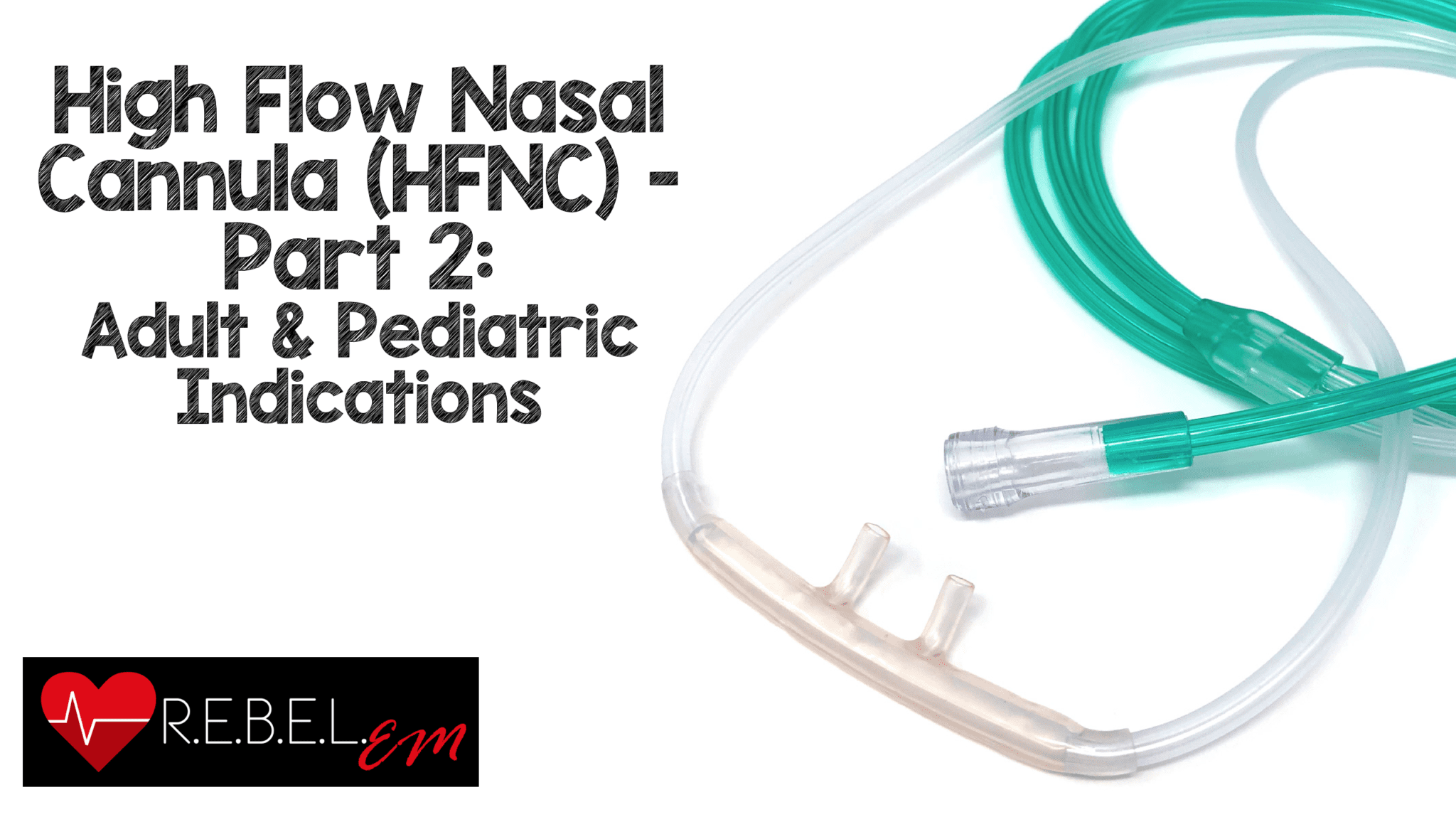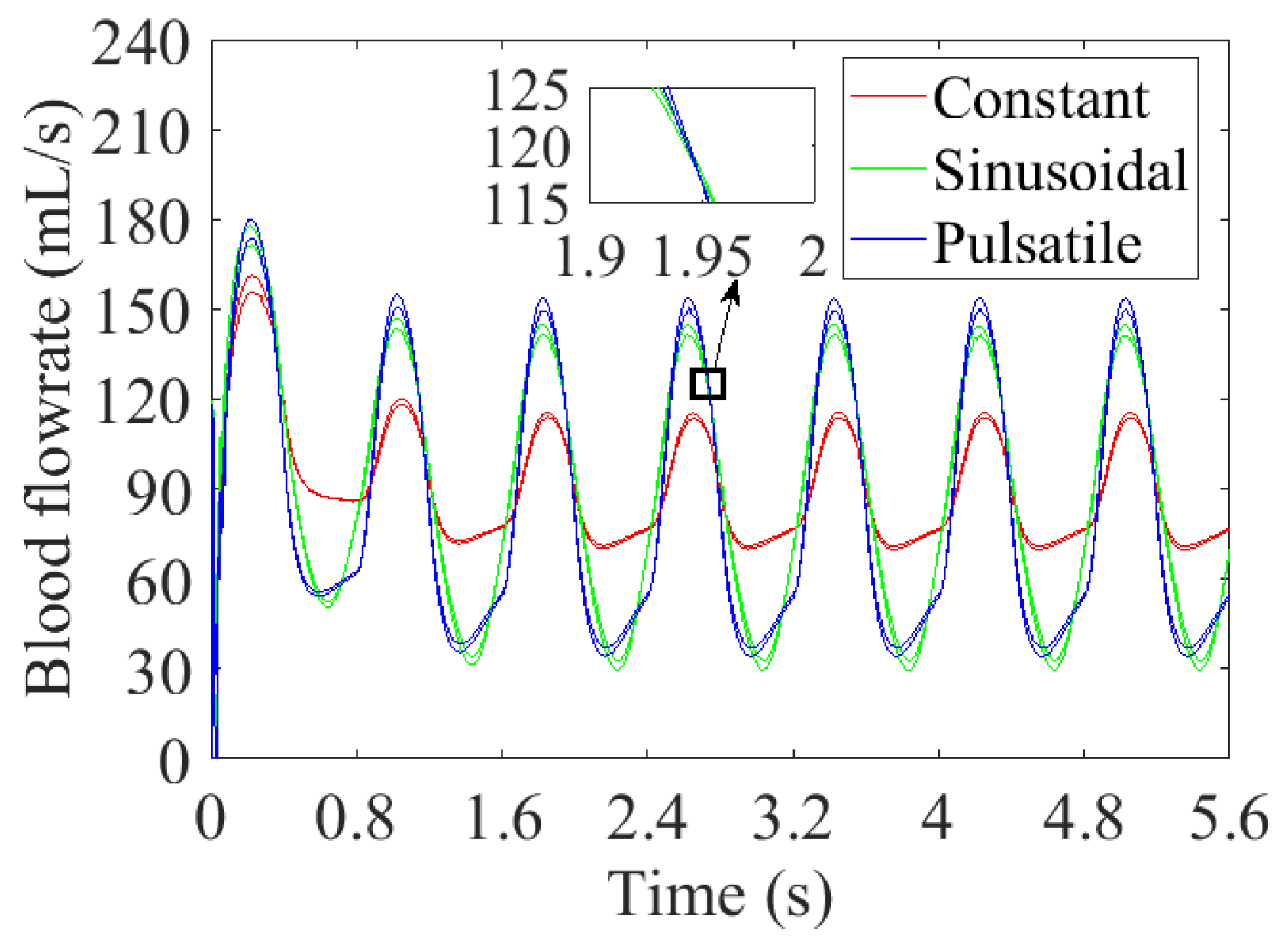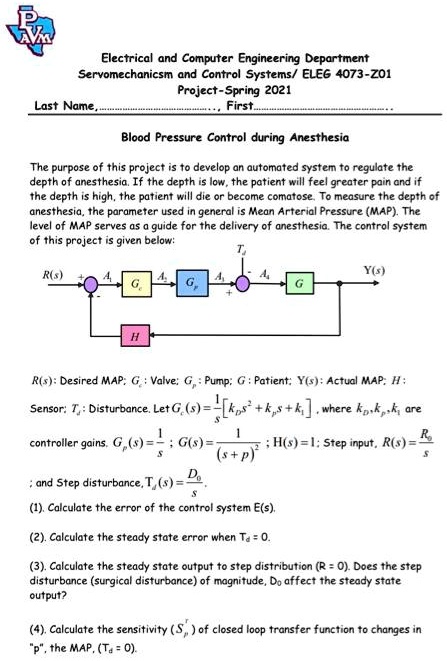high flow nasal cannula flow rate calculation
The FIO 2 derived from nasal cannula flow rates can then be used to calculate the PF ratio. An airoxygen blender allowing from 021 to 10 F I O 2 generates up to 60 Lmin flow.
This gives more time for the process of intubation before desaturation happens.

. Air-oxygen blender generates up to FiO2 10 at a flow rate of up to 60Lmin. The gas is heated and humidified through an active heated humidifier and delivered via. Here is a quick review of high flow nasal cannula therapy before breaking down some of the devices and looking in a little more detail.
Humidity and Temperature adjustable. By using specialized nasal cannulas heating the circuit to body temperature and humidifying the air these high rates can be delivered with very good patient tolerance. 2017 discovered that in GOLD stage III and IV COPD patients high-flow nasal cannula at flow rates greater than 30 L per minute decreased the respiratory rate inspiratory time to total breath time ratio and diaphragmatic work of breathing compared to NIV.
Of the 22 published and analyzed studies 20 91 used FP Optiflow systems including a FP Optiflow patient interface and a FP humidity delivery system with humidity setting of 37oC. The flow rate and fi02 can be independently titrated. In adults it can be titrated from 20 L min up to 60 L min.
For the most part just add 4 for each liter of O2. Nasal prongs do not occlude the nare 50 of the nare is open Oxygenates airway dead space. Heat and humidified high flow nasal cannula or as most call it Hi Flow Nasal Cannula HFNC isnt just a standard nasal cannula cranked up to very high flow rates.
RR EIT respiratory rate measured via electrical impedance tomography. HFNC has two parameters to be set by the providerflow rate and FiO 2. The use of nasal cannula adapted to the infants nares size to deliver heated and humidified gas at high flow rates has been associated with improvements in washout of.
Oxygen delivery through high-flow nasal cannulae increase end-expiratory lung volume and reduce respiratory rate in post-cardiac surgical patients. Management of COVID 19 patients Huddle Sheet April 2020 High flow improves oxygenation for the patient by washing out dead space in the lungs and clearing out the CO2. The optimal HFNC rate to decrease effort of breathing for children less than 3 years old is between 15 and 2 Lkgmin with the greatest improvement expected in children under 5 kg.
In pediatrics HFNC use continues to increase as the system is easily set up and is well tolerated by patients. It can provide a maximal flow rate of up to 60 l per minute with an FiO 2 of 100 5. High Flow Nasal Cannula.
After HFNC during reassessment the ROX Index can help suggest which patients will fail HFNC and need to progress to intubation for further ventilatory support. So this is how it goes. Assumes room air is 20 020 and each Lmin of oxygen 4 004.
AU arbitrary unit. Oxygen flow for every 1LPM of air flow. Nasal Cannula is typically started at 2Lmin and then titrated upwards to as high as 6Lmin although 2-4Lmin is ideal.
The nasal cannula is good for most patient needs with lower levels of oxygen requirements. HFNC high-flow nasal cannula. -- Air flow oxygen flow.
A patient has a pO 2 of 85mmHg on ABG while receiving 5 litersminute of oxygen. In general high flow nasal therapy or high flow nasal cannulas offer flow rates up to 60 liters per minute while offering a precise FiO2. PRP pressure rate product.
Historically a non-rebreather mask NRM has been used to do this. High-flow nasal cannula portable oxygen delivery and oxygen conserving devices are discussed separately. We would obviously do this above room air 21.
In addition Dzira et al. FiO 2 will then be titrated to the desired oxygen saturation. Room Air 21.
High-flow nasal cannula therapy can provide this in an alert awake patient by achieving a high-flow rate and very high amounts of FiO2 thus increasing PO2. It takes gas is able to heat it to 37 o C with a 100 relative humidity and can deliver 021 - 100 fraction of inspired oxygen FiO 2 at flow rates of up to 60 liters Lmin. PesPEEP end-expiratory pressure measured via esophageal pressure.
See our table below for common estimates of FiO₂ based on oxygen delivery device and oxygen flow rates. ΔZ change in tidal impedance difference. Total flow 5 306 806 LPM To confirm your answer use the FiO 2 formula.
Flow rate for HFNP Therapy is the same for all patients regardless of medical condition. A higher index is better as it suggests a better oxygen saturation a lower. The Relationship between High Flow Nasal Cannula Flow Rate and Effort of Breathing in Children.
FIO2 titratable up to 100. Up to an inspired oxygen fraction of 50 percent or a flow rate of 6 Lmin half of the COPD cohort receiving LTOT for. ΔPes change in esophageal pressure.
The heat and humidified high-flow nasal cannula or as most call it high-flow nasal cannula HFNC isnt just a standard nasal cannula turned up to very high flow rates. The positive end expiratory PEEP effect oxygenates the airway and the warm water creates vapors which loosens mucus so the alveoli can. It actually takes gas and can heat it to 37 o C with a 100 relative humidity and can deliver 021 100 fi02 at flow rates of up to 60 litersmin.
A rule-of-thumb is to set the flow rate around 20-30 Lmin and titrate the flow to the patients respiratory rate and work of breathing. After initial treatment with nasopharyngeal suctioning and low-flow nasal cannula NC patients with persistent respiratory distress were transitioned to HFNC with a flow rate between 4 and 15 Lmin based on clinician assessment of patient work of breathing and F i O 2 between 40 and 100 adjusted to maintain saturations 90. Principle setup of high-flow nasal cannula oxygen therapy.
The reported flow rates ranged between 10 Lmin and 60 Lmin with the majority requiring flows at the higher end of the range. The high-flow nasal cannula HFNC is a recently developed oxygen therapy device in adult patients that can deliver a humidified and heated mixture of air and oxygen at a very high flow rate. Weiler T et al.
Single limb heated inspiratory circuit avoids heat loss and condensation Lightweight flexible delivery tubing. The decisions to intubate a. High flow humidified oxygen delivered via nasal prongs longer than with standard Nasal Cannula Flow rates adjusted between 10-60 Litersminute.
High-flow nasal cannula or HFNC is a system that allows oxygen to be delivered to patients at very high flow rates. Most HFNC circuits can deliver a maximum of 60 Lmin. Oxygen flow rate 5LPM from question Air flow rate 5 163 306 LPM NOT 5 x 163 835.
The only exception to this rule is the first liter you add 3 consider this a favor done to get you onto numbers divisible by 4. Active heated humidifier capable of providing 100 body humidity. Oxygen and air source.
5 Lmin 40 oxygen FIO 2 of 040. The calculation of nasal cannula FiO2 is rather easy. This delivers 25-40 FIO2 depending upon their respiratory rate tidal volume and amount of mouth breathing.
Most of the time those concentrations will go up to a hundred percent. The Journal of Pediatrics. 2 Lkgminute for the first 12kg 05Lkgminute for each kg thereafter max flow 50 Lmin Increase flow to the prescribed rate over a few minutes or as tolerated.
High-flow nasal cannula HFNC is a relatively new device for respiratory support. EELZ end-expiratory lung impedance.

Hekaflo High Flow Nasal Oxygen Therapy Device Features Heka Medicals India Pvt Ltd

Fio2 In An Adult Model Simulating High Flow Nasal Cannula Therapy Respiratory Care

Oxygen Flow Rate Formula Dog Hd Png Download Transparent Png Image Pngitem

High Flow Nasal Cannula Influence Of Gas Type And Flow Rate On Airway Pressure And Co2 Clearance In Adult Nasal Airway Replicas Clinical Biomechanics

Solved 6 Calculate The Flow Rate Of The Perative In Chegg Com

Student Nurse Goals Nursing Students Smart Specific Measurable Nurse

Determining Iv Fluid Rates It S Important To Calculate The Right Amount Of Mivf Your Patient Should Be Getting Hourly To Prevent Iv Fluids Prevention Fluid

Student Nurse Goals Nursing Students Smart Specific Measurable Nurse

Als Pharmacology Intravenous Fluids Drug Calculations Ppt Video Online Download

High Flow Nasal Oxygen A Safe Efficient Treatment For Covid 19 Patients Not In An Icu European Respiratory Society

Hekaflo High Flow Nasal Oxygen Therapy Device Features Heka Medicals India Pvt Ltd

Applied Sciences Free Full Text Influence Of Impeller Speed Patterns On Hemodynamic Characteristics And Hemolysis Of The Blood Pump Html

Correlation Of High Flow Nasal Cannula Outlet Area With Gas Clearance And Pressure In Adult Upper Airway Replicas Clinical Biomechanics

Solved Electrical And Computer Engineering Department Servomechanicsm And Control Systems Eleg 4073 Zo1 Project Spring 2021 Last Name First Blood Pressure Control During Anesthesia The Purpose Of This Project Derelop Automated System T0 Regulate

Rox Ing With Hfnc Criticalcarenow

All Ati Skills Module 3 0 Quizzes All Ati Dosage Calculation 3 0 Quizzes Answered 2022 In 2022 Dosage Calculations Airway Management Medication Administration

High Flow Nasal Cannula Hfnc Part 2 Adult Pediatric Indications Rebel Em Emergency Medicine Blog

